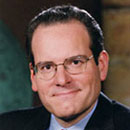Business
/ArcaMax

Evan Ramstad: Even in 2025, you could put your money where your mouth is or heart lies
The most opined-about moment of the year on Minnesota’s business scene happened in January, when Target Corp. during Donald Trump’s inauguration week said it was ending some of its programs for improving diversity and inclusion.
I wrote at the time Target’s leaders were reading the zeitgeist, and Trump’s re-election had ended the virtue...Read more

Clive Crook: Investors are flying blind into the 'Golden Age'
Ten years ago I praised a book by Mervyn King, former governor of the Bank of England, on the subject of “radical uncertainty.” Back then, I agreed with King that radical uncertainty – the kind that statistical analysis can’t deal with – was a pressing issue for financial regulators. After the extraordinary year just ending, the ...Read more

Auto review: What I want for Christmas -- Porsche 911T manual
BRASELTON, Ga. — The bad news is the manual transmission is an endangered species these days as emissions regulations and electric vehicles have shrunk the options for American enthusiasts. The good news? Americans looooove to row the gearbox compared to their foreign peers (40% of VW GTI sales have been manual, just 5% in Europe), and so ...Read more

Auto review: 2025 Honda Prologue SUV is a win for EVs
Stacking up in Grasso’s Garage recently has been a slew of EV SUVs. From the EV9 by KIA and the newly redesigned fleet from Audi, EV’s are everywhere. As someone who is certain that vehicles should be hybrid’s and not fully electric, the Honda Prologues enters Grasso’s Garage and is changing my mind quickly.
The 2025 Honda Prologue ...Read more
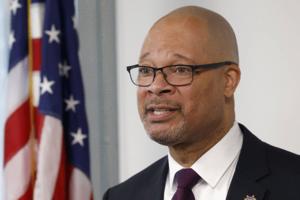
Nevada files court brief in support of Maryland gaming fight
The Nevada attorney general’s office has filed a “friend of the court” brief on behalf of the state of Maryland in its continuing battle against prediction markets that are taking sports bets the state says are in violation of Nevada gaming laws.
Nevada Attorney General Aaron Ford on Monday formally filed a 49-page amicus brief co-...Read more

Google is at last letting users swap out embarrassing Gmail addresses without losing their data
Google has finally answered users' cries, allowing Gmail users to swap out embarrassing teenage email addresses.
Gmail account holders can now change their existing @gmail.com address while retaining their data and services.
Once changed, old email addresses will remain active, and users will continue to receive emails sent to both the old and...Read more
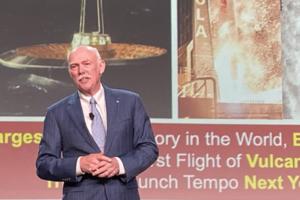
After leaving ULA, Tory Bruno heads to Blue Origin
Earlier this week United Launch Alliance announced its president and CEO for nearly 12 years, Tory Bruno, was stepping down to pursue different opportunities.
The opportunity was revealed Friday as Bruno was named president for competitor Blue Origin’s newly formed National Security Group, reporting to Blue Origin CEO Dave Limp.
“We share ...Read more

Gold and silver smash records again as rally gathers momentum
Gold, silver and platinum jumped to all-time highs to extend a historic end-of-year rally for precious metals, with support from escalating geopolitical tensions, U.S. dollar weakness and thin market liquidity.
Spot gold rose as much as 1.2% to a peak above $4,530 an ounce on Friday. Spot silver for immediate delivery advanced for a fifth ...Read more

Stocks hover near record as Nvidia gains on AI licensing deal
U.S. stocks wavered near a record high in thin holiday trading, as yields on 10-year Treasuries bounced and investors shifted attention toward commodities. Nvidia Corp. climbed as analysts viewed a licensing deal with artificial intelligence startup Groq positively.
The S&P 500 and the Nasdaq 100 were both trading little changed at 12:32 p.m. ...Read more

Kaiser labor talks stall, raising fears of another strike
SAN JOSE, Calif. — Talks between Kaiser and a labor union representing health care workers ground to a halt late last week, raising concerns about another strike at California’s largest health care provider.
The union representing 31,000 Kaiser workers statewide — including about 2,000 rehab therapists, physician assistants, nurse ...Read more
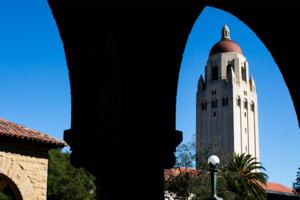
They graduated from Stanford. Due to AI, they can't find a job
A Stanford software engineering degree used to be a golden ticket. Artificial intelligence has devalued it to bronze, recent graduates say.
The elite students are shocked by the lack of job offers as they finish studies at what is often ranked as the top university in America.
When they were freshmen, ChatGPT hadn't yet been released upon the ...Read more

Casey Williams: Whither the 'hot hatch' in the age of electric motoring?
It’s noon, and I’m sitting in Jackson, Tennessee, a waypoint on Interstate 40 an hour east of Memphis. My husband calls and wants to know if I’ll be home in Indianapolis for dinner. I look at the Volkswagen GTI while knowing there are hours of challenging roads ahead.
“Yeah, I’ll be there,” I said. I threw my bags under the hatch, ...Read more

Larry Printz: The top 10 test drives of 2025
For many people, automobiles serve a purely utilitarian purpose. They are a means of transportation, a necessity, and little more than a recurring expense. Yet for most of us, they are far more than that. In their design, one glimpses human aspiration; in their performance, a promise of escape. Behind the wheel, anxieties are momentarily left ...Read more
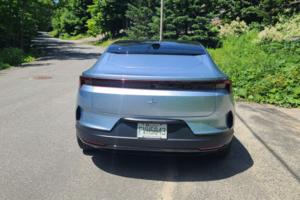
Henry Payne: The best auto features of 2025
Automobiles are rolling department stores containing everything from electronics to music to tires to wardrobe fashion. Wardrobe fashion? Check out the stylish blue leather seats in the Cadillac Optiq.
This year brought more cool features to keep the shoppers coming.
One feature I didn’t care for? The warning gong — BEEP BEEP BEEP — in ...Read more
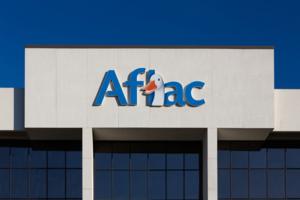
Hack of Aflac potentially affected more than 22 million people, company says
A cybersecurity breach of Columbus, Georgia-based insurance giant Aflac Inc. potentially exposed the personal information of approximately 22.65 million people, the company said in a statement last week.
The affected files included names, contact information, claims information, health information, Social Security numbers, and/or other personal...Read more

ICE crackdown in Minn. chills sales at immigrant-owned businesses
MINNEAPOLIS — At Quruxlow Restaurant on Lake Street in Minneapolis, only a portion of the dining space is being used because of a drop-off in customers. Business at the African restaurant is also roughly half of what it was before this month’s ICE crackdown, according to the restaurant’s manager.
The restaurant is just one immigrant-owned...Read more

US jobless claims fall to 214,000 during volatile holiday season
Applications for U.S. unemployment benefits fell last week, highlighting the seasonal swings in the data at this time of year.
Initial claims decreased by 10,000 to 214,000 in the week ended Dec. 20, according to Labor Department data released Wednesday. The median forecast in a Bloomberg survey of economists called for 224,000 applications.
...Read more
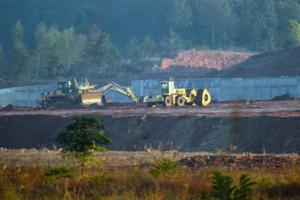
US rare earth buyers still see China curbs despite Trump deal
China is still restricting the rare earth elements that the U.S. needs to produce its own permanent magnets and other products even after President Donald Trump reached a deal with his Chinese counterpart in October to lift restrictions on the supplies, according to market participants.
More than a dozen consumers, producers, government ...Read more

Toys are talking back thanks to AI, but are they safe around kids?
Stuffed animals that talk back. Chessboards with pieces that move on their own. And a chatty holographic fairy in a crystal ball.
Your next toy purchase might be powered by artificial intelligence and able to converse with your kids.
Chatbots and AI-powered assistants that can quickly answer questions and generate texts have become more common...Read more

California crypto company accused of illegally inflating Katy Perry NFTs and fraud
Four years ago, California startup Theta Labs' cryptocurrency was soaring, and its future appeared bright when it landed a partnership with pop star Katy Perry.
The Bay Area company had built a marketplace for digital collectibles known as nonfungible tokens, or NFTs, and had teamed up with Perry to launch NFTs tied to her Las Vegas concert ...Read more
Popular Stories
- After leaving ULA, Tory Bruno heads to Blue Origin
- Gold and silver smash records again as rally gathers momentum
- Kaiser labor talks stall, raising fears of another strike
- Stocks hover near record as Nvidia gains on AI licensing deal
- Google is at last letting users swap out embarrassing Gmail addresses without losing their data


